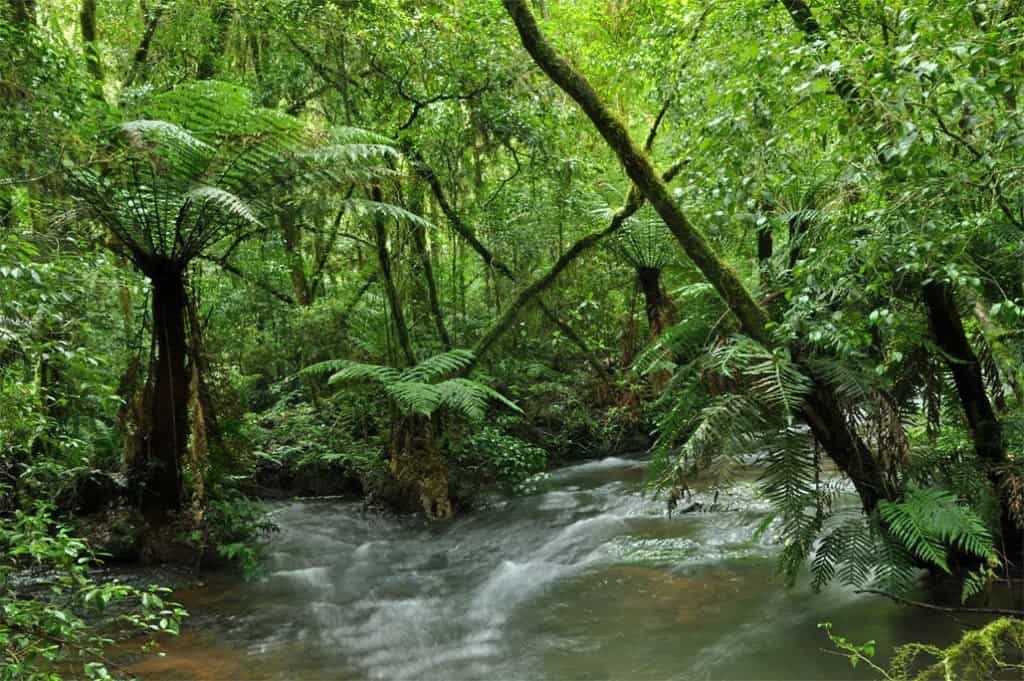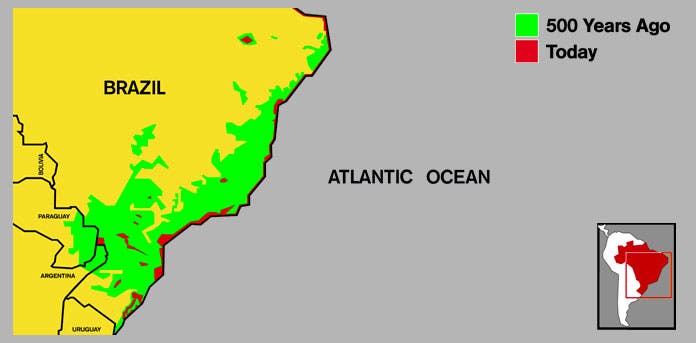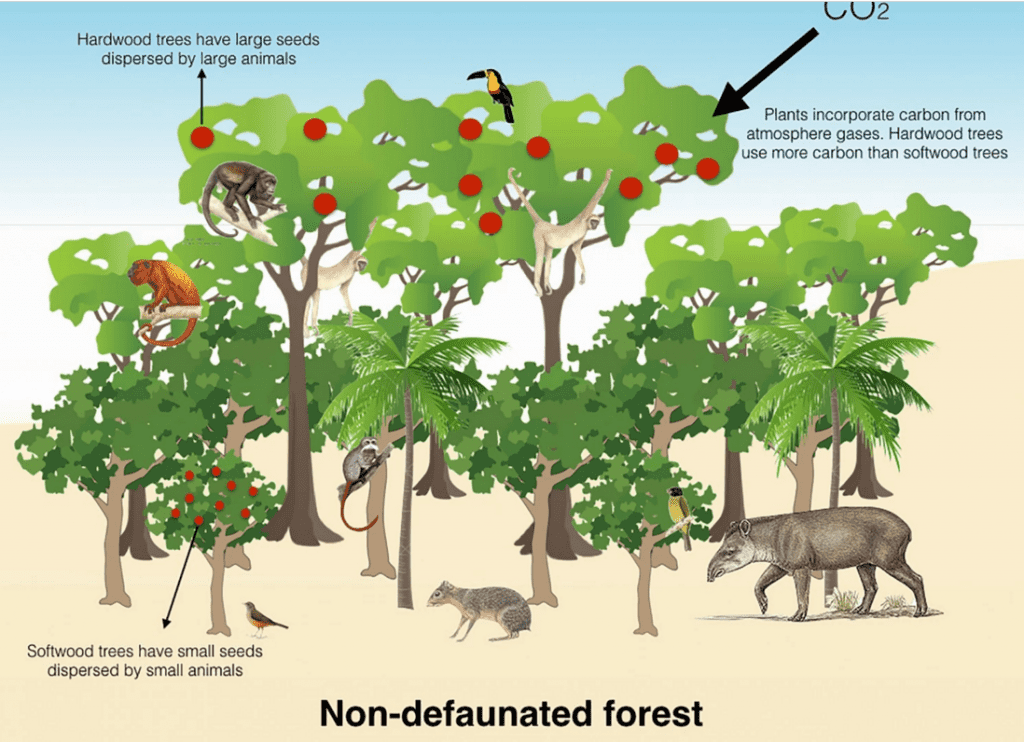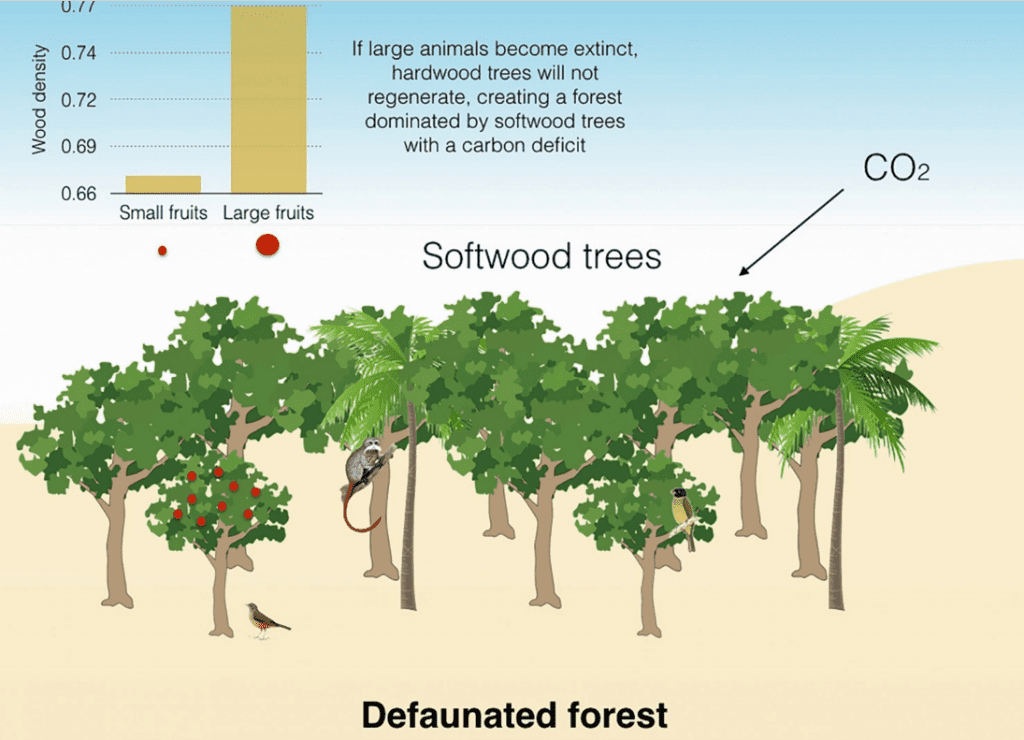It’s the bigger or charismatic of animals that get targeted by human hunters. These give off more meat, more pelt and make for better trophies. The effects of over-hunting and poaching are well documented. Most markedly, this results in extinction and ecosystem destabilization. A new study, however, adds a new frighting dimension to hunting: climate change acceleration through loss of carbon storage.

The world’s forests act like carbon sinks, sucking up much of the excess carbon from the air while providing fresh O2 in the process. Tree store this carbon keeping it from warming the planet. Naturally, deforestation will mean that this carbon storage capability will be reduced, with global warming as a direct consequence. But killing animals can be just as damaging to the ecosystem as cutting down trees, a new study made by Brazilian researchers suggests.
Frugivores – animals who eat fruit – are considered to be important seed disperses for many tropical plant species. Seed and/or fruit size limits the number of frugivores that can disperse the seeds and, in general, large frugivores can handle a wider range of fruit sizes than small frugivores. These large frugivores are thought to be vulnerable to extinction in the face of selective hunting and habitat loss and degradation . Therefore, plants that produce large-sized fruits and/or seeds may be vulnerable to extinction when they lose their natural seed dispersers.
The researchers devised an ecological model using data gathered by extensive surveys across the Atlantic Forest of Brazil — the second largest rainforest in South America, but also one of the most devastated wood covered regions in the world by deforestation. “When you land in Rio de Janeiro, for instance, you are landing in the Atlantic forest,” says Mauro Galetti, one of the study’s authors and also based at the Universidade Estadual Paulista. “But only 12 percent of this forest is left, it was destroyed in the last 500 years.”

The analysis suggests that without large frugivores like tapirs, spider monkeys, toucans and agoutis, the rain forest would look strikingly different. The diversity in tree species plummets. A more densely packed forest, but with much smaller trees (an proportionally smaller carbon sequestration value) takes its place since these bear smaller seeds which are dispersed by bats, birds and small marsupials (not hunters’ favorite).
Before

After

Their work shows a close relationship between large fruit-eating vertebrate animals and the tallest trees, and the researchers claim this analysis should apply to all of South America’s rainforests – not just the Atlantic Forest.
“Halting the ongoing, fast-paced defaunation of tropical forests will not only save large charismatic animals and the plants they disperse but also have effects on climate change, carbon markets, and reforestation processes,” the authors conclude.
Most climate change discussions revolve around carbon, trees and the oceans. Maybe it’s time animals get included as well. Their contributions surely warrant serious consideration.


